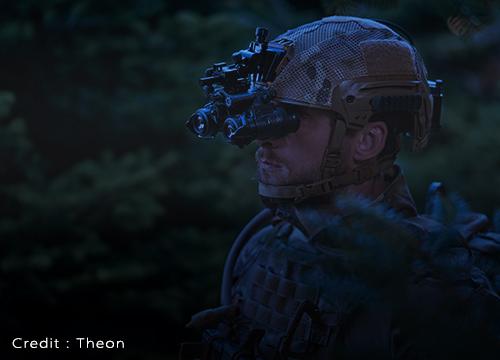Reconnaissance robots are omnipresent in today’s military operations. They come in all sizes, weights and shapes and are used for many different applications. As they are remotely controlled, the use of a reconnaissance robot means less risk for the user and even grants access to sites that are inaccessible to humans.
Reconnaissance in the field
The equipment needed to perform a quick and complete reconnaissance in the field has to meet certain criteria. Important points are the autonomy of the robot, its size, its weight, the ease of transportation, its reliability, the available accessories, etc. Usually, reconnaissance robots are specifically configured for applications like surveillance, lifting and neutralization of dangerous loads, transport, etc. with extra Pan-Tilt-Zoom camera heads with visual/thermal cameras, illuminators, Chemical, Biological, Radiological & Nuclear sensors, explosives trace detectors, wire cutters, directional microphones, etc.
PIAP FENIX® reconnaissance robot
Figure 1: FENIX®
The FENIX® from PIAP is a light reconnaissance robot. It is designed for military reconnaissance teams to detect threats even at locations inaccessible to humans. Depending on its configuration, it can observe, lift and neutralize dangerous loads or transport sabotage equipment. Its unique features are its compact size, low weight (15 kg), advanced driving mechanism and modular structure which allows a quick and easy installation or replacement of additional equipment. Due to its small size and low weight the FENIX® is easy to transport in a backpack.
Figure 2: Remote system
The FENIX® solid construction, compact dimensions and dynamic drive ensure easy maneuverability and high speed in the field. Its chassis is equipped with tracks and wheels with moveable front flippers. This ensures easy movement on hardened roads, dirt roads, tracks, and pathless areas in any environment with inclines up to 45°. It’s hybrid track-wheel mechanism allows you to remove the wheels and front flippers to reduce height and width of the robot, making hard-to-reach areas easily reachable.
Xenics thermal OEM module on board
PIAP has worked together with Xenics for the thermal imaging capabilities of its FENIX®. PIAP used an XTM-640 thermal imaging camera core with analog output and 100mm LWIR lens for the FENIX®. The thermal camera shares a common housing with a visual camera and both are mounted on a pan-tilt unit on the manipulator arm of the robot. The robot is remotely controlled by radio or optical fibre. The video signal can be displayed or recorded on the handheld control panel. The control panel gives
access to the camera position and parameters, allowing you to adapt the robot to the
current situation.
The XTM-640 thermal camera core used in the FENIX® has a high resolution (640×480) and small pixel pitch (17 μm), resulting in very clear thermal images. Its flexible interfacing made the integration easy.





